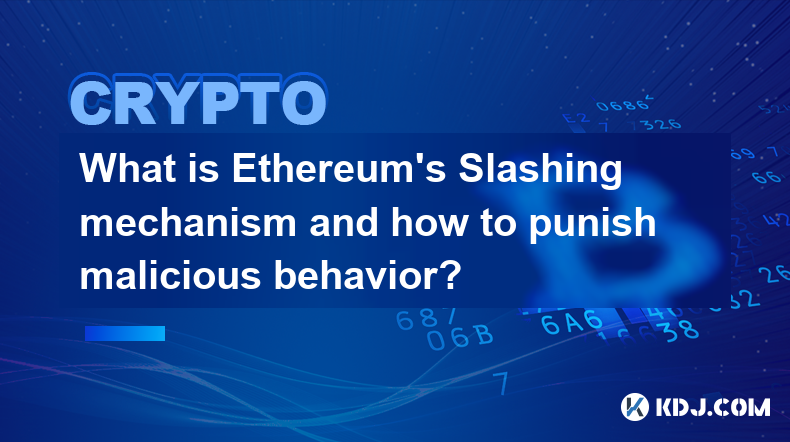-
 Bitcoin
Bitcoin $96,813.2912
-1.45% -
 Ethereum
Ethereum $2,683.4448
-2.00% -
 XRP
XRP $2.5794
-4.84% -
 Tether USDt
Tether USDt $1.0001
-0.02% -
 BNB
BNB $648.8226
-0.84% -
 Solana
Solana $171.6665
-1.37% -
 USDC
USDC $0.9999
0.00% -
 Dogecoin
Dogecoin $0.2467
-2.72% -
 Cardano
Cardano $0.7775
-3.41% -
 TRON
TRON $0.2391
-2.44% -
 Chainlink
Chainlink $17.7688
-2.62% -
 Sui
Sui $3.3561
-1.93% -
 Avalanche
Avalanche $24.6183
-1.40% -
 Stellar
Stellar $0.3290
-5.08% -
 Litecoin
Litecoin $128.7611
0.09% -
 Toncoin
Toncoin $3.6370
0.95% -
 Shiba Inu
Shiba Inu $0.0...01532
-1.08% -
 UNUS SED LEO
UNUS SED LEO $9.7430
0.12% -
 Hedera
Hedera $0.2127
-3.72% -
 Hyperliquid
Hyperliquid $24.8685
0.74% -
 Polkadot
Polkadot $5.1432
2.39% -
 MANTRA
MANTRA $7.5477
0.34% -
 Bitcoin Cash
Bitcoin Cash $319.2654
-1.53% -
 Ethena USDe
Ethena USDe $0.9979
-0.18% -
 Bitget Token
Bitget Token $4.7188
4.00% -
 Dai
Dai $0.9999
-0.03% -
 Uniswap
Uniswap $8.8745
-5.14% -
 Monero
Monero $231.7829
0.46% -
 NEAR Protocol
NEAR Protocol $3.3718
-1.01% -
 Pepe
Pepe $0.0...09394
-1.42%
How does Ethereum’s network congestion problem arise and how to solve it?
Due to its Proof-of-Work mechanism and limited block size, Ethereum's network congestion often leads to high gas fees, which can be mitigated with Layer-2 solutions and upcoming Ethereum 2.0 upgrades.
Feb 20, 2025 at 05:18 am

Key Points:
- Ethereum's network congestion is primarily caused by its Proof-of-Work consensus mechanism and limited block size.
- Gas fees, the transaction costs on Ethereum, fluctuate due to network congestion and transaction volume.
- Layer-2 solutions such as Polygon and Arbitrum aim to alleviate congestion by processing transactions off-chain.
- The Ethereum Foundation is implementing Ethereum 2.0, a major upgrade that will switch to Proof-of-Stake and introduce sharding to enhance scalability.
- Developers and users can adopt best practices to reduce the impact of network congestion on their transactions.
How does Ethereum's Network Congestion Problem Arise?
- Proof-of-Work Consensus Mechanism: Ethereum's current consensus mechanism, Proof-of-Work (PoW), requires miners to solve complex mathematical puzzles to validate transactions and add them to blocks. This process is computationally intensive and time-consuming, limiting the number of transactions that can be processed per block.
- Limited Block Size: Each block on Ethereum has a predetermined size limit. When the number of pending transactions exceeds the block size, transactions are queued, leading to delays and increased gas fees.
- Transaction Volume: As Ethereum's popularity grows and more users join the network, the transaction volume increases, further straining the network capacity. Complex applications and decentralized finance (DeFi) platforms contribute significantly to transaction volume.
- Network Latency: The time it takes for a transaction to be included in a block can vary depending on network conditions. Slow network latency can exacerbate congestion issues, especially during periods of high demand.
How to Solve Ethereum's Network Congestion Problem
- Layer-2 Solutions: Layer-2 solutions such as Polygon, Arbitrum, and Optimism operate outside of the Ethereum main chain. They bundle multiple transactions into a single layer-2 block, which is then submitted to the main chain for validation. This greatly reduces network congestion and lowers gas fees for transactions processed on Layer-2.
- Ethereum 2.0 Upgrade: The Ethereum Foundation is developing Ethereum 2.0, a major upgrade that will introduce several scalability improvements. The upgrade includes the switch to Proof-of-Stake (PoS), which is a more energy-efficient and faster consensus mechanism than PoW. Additionally, Ethereum 2.0 will implement sharding, which involves splitting the Ethereum blockchain into multiple shards to increase transaction throughput.
- Best Practices for Users and Developers: To mitigate the impact of network congestion, users can employ strategies such as scheduling transactions during off-peak hours and utilizing gas estimation tools to optimize gas fees. Developers can optimize their smart contracts for gas efficiency and leverage Layer-2 solutions when appropriate.
FAQs
What are gas fees on Ethereum?
Gas fees are transaction costs on the Ethereum network. They represent the amount of ETH that users need to pay to incentivize miners to include their transactions in a block and process them.
Why do gas fees fluctuate?
Gas fees fluctuate based on network congestion and transaction volume. When demand for block space is high, gas fees increase as users compete to have their transactions prioritized.
What is the long-term solution to Ethereum's congestion problem?
Ethereum 2.0 is the long-term solution to Ethereum's congestion problem. This major upgrade will implement sharding and switch to Proof-of-Stake, significantly enhancing the network's scalability and reducing gas fees.
How can I reduce the impact of network congestion on my transactions?
To reduce the impact of network congestion on their transactions, users can:
- Schedule transactions during off-peak hours (e.g., late at night or early in the morning).
- Use gas estimation tools to optimize gas fees by estimating the minimum amount of gas required for a transaction.
- Consider leveraging Layer-2 solutions for lower gas fees.
Disclaimer:info@kdj.com
The information provided is not trading advice. kdj.com does not assume any responsibility for any investments made based on the information provided in this article. Cryptocurrencies are highly volatile and it is highly recommended that you invest with caution after thorough research!
If you believe that the content used on this website infringes your copyright, please contact us immediately (info@kdj.com) and we will delete it promptly.
- From Yeezy to Web3: How Ye Could Shake Up Digital Ownership
- 2025-02-22 02:45:24
- Ohio man specs the ‘most expensive’ Corvette E-Ray with $50k upgrades
- 2025-02-22 02:45:24
- A Guide Book of United States Coins, 2026, 79th Edition
- 2025-02-22 02:45:24
- Viral Chart Sparks Speculation About China’s M1 Money Supply, but Analysts Debunk “Liquidity Injection” Theory
- 2025-02-22 02:45:24
- Is Pepeto the Shiba of 2025? This Presale Is Set to Explode!
- 2025-02-22 02:45:24
- Crypto Whales Actively Accumulate DeFi Tokens MKR, LDO, and Utility Token APE
- 2025-02-22 02:45:24
Related knowledge

What is Ethereum’s Slashing mechanism and how to punish malicious behavior?
Feb 20,2025 at 03:08am
Key PointsOverview of slashingDifferent types of slashing in EthereumIncentives and consequences of slashingIdentifying and reporting slashed validatorsOngoing discussions and potential improvementsEthereum's Slashing Mechanism: Punishing Malicious BehaviorEthereum's slashing mechanism is an essential tool for ensuring network security and punishing mal...

What is the verifier node of Ethereum and how to become a verifier?
Feb 19,2025 at 06:00pm
The Verifier Node of Ethereum: A Comprehensive GuideKey Points:What is a Verifier Node?How to Become a Verifier NodeResponsibilities and Rewards of a Verifier NodeMinimum Requirements for Becoming a Verifier NodePotential Difficulties in Running a Verifier Node1. What is a Verifier Node?A Verifier Node is an independent entity on the Ethereum network th...

What is Ethereum’s staking, and how to participate and earn money?
Feb 19,2025 at 04:37pm
Key Points:Understanding Ethereum's Staking MechanismSteps to Participate in StakingBenefits and Rewards of StakingSecurity and Risk ConsiderationsTechnical Requirements and Hardware OptionsPotential Challenges and Troubleshooting TipsFAQs on Ethereum StakingWhat is Ethereum's Staking?Proof-of-Stake (PoS) is a consensus mechanism used in blockchain netw...

What is Ethereum’s DAO (Decentralized Autonomous Organization) and how does it work?
Feb 20,2025 at 03:12am
Key PointsDefinition and Structure of a DAOGovernance and Decision-Making in DAOsBenefits and Use Cases of DAOsChallenges and Limitations of DAOsWhat is Ethereum's DAO (Decentralized Autonomous Organization) and How Does It Work?Definition and Structure of a DAOA Decentralized Autonomous Organization (DAO) is an innovative governance and management fram...

What is Ethereum's multi-signature wallet and how to improve security?
Feb 20,2025 at 02:18pm
Key Points:Understanding the Concept of a Multi-Signature WalletBenefits and Drawbacks of Multisig WalletsRequirements for Setting Up a Multisig WalletStep-by-Step Guide to Generating a Multisig WalletImplementing Strategies for Enhanced Security1. Understanding the Concept of a Multi-Signature WalletA multi-signature (multisig) wallet in the Ethereum e...

What is Ethereum's oracle and how to provide data for smart contracts?
Feb 21,2025 at 01:30am
Key Points:Understanding the concept of oracles in EthereumExploring different types of oraclesDetailed guide on how to provide data for smart contractsAddressing potential challenges and considerationsWhat is Ethereum's Oracle?Oracles are crucial components in the Ethereum ecosystem, enabling smart contracts to access real-world data and off-chain even...

What is Ethereum’s Slashing mechanism and how to punish malicious behavior?
Feb 20,2025 at 03:08am
Key PointsOverview of slashingDifferent types of slashing in EthereumIncentives and consequences of slashingIdentifying and reporting slashed validatorsOngoing discussions and potential improvementsEthereum's Slashing Mechanism: Punishing Malicious BehaviorEthereum's slashing mechanism is an essential tool for ensuring network security and punishing mal...

What is the verifier node of Ethereum and how to become a verifier?
Feb 19,2025 at 06:00pm
The Verifier Node of Ethereum: A Comprehensive GuideKey Points:What is a Verifier Node?How to Become a Verifier NodeResponsibilities and Rewards of a Verifier NodeMinimum Requirements for Becoming a Verifier NodePotential Difficulties in Running a Verifier Node1. What is a Verifier Node?A Verifier Node is an independent entity on the Ethereum network th...

What is Ethereum’s staking, and how to participate and earn money?
Feb 19,2025 at 04:37pm
Key Points:Understanding Ethereum's Staking MechanismSteps to Participate in StakingBenefits and Rewards of StakingSecurity and Risk ConsiderationsTechnical Requirements and Hardware OptionsPotential Challenges and Troubleshooting TipsFAQs on Ethereum StakingWhat is Ethereum's Staking?Proof-of-Stake (PoS) is a consensus mechanism used in blockchain netw...

What is Ethereum’s DAO (Decentralized Autonomous Organization) and how does it work?
Feb 20,2025 at 03:12am
Key PointsDefinition and Structure of a DAOGovernance and Decision-Making in DAOsBenefits and Use Cases of DAOsChallenges and Limitations of DAOsWhat is Ethereum's DAO (Decentralized Autonomous Organization) and How Does It Work?Definition and Structure of a DAOA Decentralized Autonomous Organization (DAO) is an innovative governance and management fram...

What is Ethereum's multi-signature wallet and how to improve security?
Feb 20,2025 at 02:18pm
Key Points:Understanding the Concept of a Multi-Signature WalletBenefits and Drawbacks of Multisig WalletsRequirements for Setting Up a Multisig WalletStep-by-Step Guide to Generating a Multisig WalletImplementing Strategies for Enhanced Security1. Understanding the Concept of a Multi-Signature WalletA multi-signature (multisig) wallet in the Ethereum e...

What is Ethereum's oracle and how to provide data for smart contracts?
Feb 21,2025 at 01:30am
Key Points:Understanding the concept of oracles in EthereumExploring different types of oraclesDetailed guide on how to provide data for smart contractsAddressing potential challenges and considerationsWhat is Ethereum's Oracle?Oracles are crucial components in the Ethereum ecosystem, enabling smart contracts to access real-world data and off-chain even...
See all articles





















































































